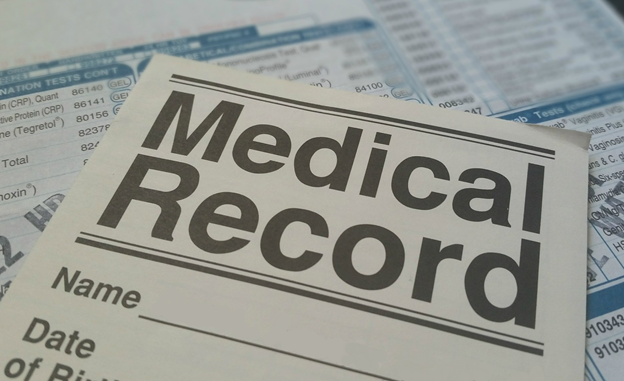Modern physician’s office can be bisected into two parts- the medical practice and the ton of paperwork and documentation that comes with maintaining a health care facility.
Even a small heath care center or an individual’s practice has its own share of record maintenance. This is why investing in a credible electronic medical record (EMR) system is necessary.
In this article, we are going to look at the meaning of EHR, the benefits of Electronic Health Records, its disadvantages as well as why healthcare facilities are reluctant to adopt EHR.
First, let us understand the electronic health record system.
What Is Electronic Health Records?
What is an EHR system?
Like the name suggests, it is essentially an electronic record of a patient’s health related information that can be quantized and stored in an electronic form which makes it easy to transfer, retrieve and modify as the situation requires.
Okay. Now we know what an EHR system is. But what is an electronic health record?
It is information will include the diagnosis; treatment provided dating back years on end. This information will come in handy when your patient opts to consider treatment at a different facility sometime in the future.
Since all the necessary patient information is literally at your fingertips, the physician can easily modify the treatment procedure to make the patient’s stay in the facility as comfortable as possible.

It also allows the doctors to make sure that the treatment being offered does not react violently with a pre-existing condition or with a medication that the patient is already taking.
How Does Electronic Health Records Improve Patient Care?
EHRs contain way fewer errors than paper records.
This can greatly improve communication between physicians, enabling each party to have a full access to the patient’s medical history. Physicians will now not be constrained to the snapshot-type overview from the present visit.
EHR also allows doctors to exchange the complete patient history in real time.
The electronic health records (EHR) also sends the doctor automated reminders regarding screenings and preventive visits. EHR helps patients to manage their conditions and participate more in their healthcare.
With regards to medication, it’s easy for patients to misplace or misread paper prescriptions.
This may result in dosage errors and in worst cases, the dispensing of the wrong medication. With electronic prescribing, doctors communicate directly with the pharmacy, saving time and reducing errors.
EHR also enhances patient safety by making automatic checks and raising alarms in case of any dangerous drug interactions. With this, it’s possible to get a more detailed overview, enabling doctors to make a quick diagnosis.
Moreover, through EHR, it is possible for doctors to track the patient’s medical history and see the continuing care they are into. They get to see the prescriptions by the other doctors that the patient has been seeing.
EHR saves a lot of time when the patient first visits the doctor’s office. Now, if the patient’s condition is an emergency, the doctor’s ability to access information through EHR can mean the difference between life and death.

EHR has many advantages for both patients and healthcare providers
Many catastrophe events have demonstrated that patients can be frightened or confused.
It is not uncommon for patients to forget their personal medical history. Every second counts as the doctor tries to figure out the patient’s blood type, allergy information and medical history.
Advantages of Electronic Health Records to Healthcare Providers
When a patient receives services from several physicians, tracking their history, allergies, blood type, medications, medical procedures and other relevant information may be cumbersome when relying on paper records.
By using EHR, multiple healthcare providers irrespective of their location can simultaneously access the patient’s information.
And that’s not all…
The electronic record can provide up to the minute information on the patient’s history. For instance, every doctor that accesses the information can see the patient’s past and recent test results.
Similarly, medical practitioners can quickly transfer medical information to other departments within the hospital, without transcription errors.
This improves the quality of healthcare overall. In fact, both hospital employees and patients appreciate these process improvements as it helps keep the facility running on schedule.
Other than improving communication between clinicians, EHR improves communication with insurance providers, diagnostic centres, and pharmacies.
This also means that the information is traceable, reducing lost messages and follow-up calls.
EHR also streamlines office management through integrated scheduling that is connected to the patient’s progress notes. Such EHR features save a lot of time resulting in greater productivity.
In the healthcare industry, administrative tasks take a lot of time and are costly. Clinicians and hospital staff can spend a large percentage of their day processing forms. EHRs are paperless, helping to streamline a number of routine tasks.

EHR reduces the workload among healthcare providers.
A decrease in the amount of paperwork also means that the required storage space is eliminated. The instant storage and retrieval of EHR means that doctors’ offices are less cluttered, increasing their efficiency.
And reducing medical errors is a really big concern in healthcare. With an EHR, the problem of lost or misplaced patient files is eliminated.
Even with all these benefits of EHR, getting the necessary equipment, hiring the right personnel and getting professionals to offer training can be costly.
Fortunately, there are financial incentives that can help organizations to recover their investment.
The Medicare EHR Incentive Program and the Medicaid EHR Incentive program enables eligible providers to earn incentives for the adoption as well as the meaningful use of EHR.
Disadvantages and Problems with Electronic Health Records
The Health Insurance Portability and Accountability Act (HIPAA) violations are more common than most realize. HIPAA violations can cost anywhere from $100 to $1.5 million when detected.
HIPAA was initiated in 1996 to ensure the confidentiality and security of US citizens’ data. This doesn’t mean that a hospital employee should lose a computer or access the patient’s file without authorization to violate HIPAA.
If a doctor discusses a patient’s condition with their family, that’s a HIPAA violation.
Ransomware attacks caused by malware and other information breach incidents cost hospitals thousands of dollars for each incident. This makes EHR inaccessible until the hospital pays a ransom to restore the data.
The worst thing is that even with the ransom paid, there is no guarantee that no files were copied and distributed to other parties.
Another disadvantage of EHR is that they need regular updates to remain at peak performance. There are different types of electronic health record systems and each has a development team behind it.
The problem is that not every software developer updates. If a hospital chooses a software platform that receives infrequent updates, they may be at a disadvantage compared to hospitals with systems that are regularly updated.
Many specialists have access to a computer in an interview room. However, this isn’t the case with family doctors or general practitioners. Some practices may have the doctor carry a tablet or laptop to maintain access to their EHR.
In the event the doctor forgets the EHR, then information gaps may start appearing in the patient’s record. This happens because data collected in real time is more accurate than data recalled even after a few minutes.
Another disadvantage of EHR is that they are expensive. Medical facilities invest considerable sums of money in setting up, maintaining and training staff on the use of EHR. Also, system updates are expensive.
In fact, most hospitals need to hire IT professionals to outsource their tech needs and keep the system running as efficiently as possible.
Challenges Implementing Electronic Health Records and Reasons for Reluctance in Adopting EMR
Although the benefits of incorporating EMR into a medical care facility setting seem lucrative, many are still at odds when adopting this technology. Some of the reasons why enterprises are shying away from EMR are:
- Lacked support skills that are necessary to maintain and run the system.
- Inertial towards a current method of meticulously recording patient data in a traditional file folder.
- Inhibitions of revamping an existing system and fears of initial incompetence until everyone involved are quite proficient at running the systems.
- Concerns about fast obsolesce/ failure to upgrade to newer models or technology.

Some organizations are resistant to electronic health records
However, the Institute of Medicine issued a seven-point functionality that recognized the importance of adopting EMR in modern medical practice. These include:
- Ease of access to patient information including diagnoses, allergies, prior medication, lab results etc.
- Access to complete patient medical history, even those that were recorded at a different medical facility.
- Computer decision support systems that alert a physician in case of drug interactions.
- Secure, near error-proof digital storage facility.
- Patient’s access to health records, disease management tools and other health information resources.
- Computerized administration, such as scheduling, preferred treatments, etc.
- Standardized electronic data processing for increased patient safety and disease surveillance.
Electronic Medical Records (EMR) vs. Electronic Health Records (EHR)
There are inherent differences between EMR and EHR. EMRs are nothing more than recording services that store the entire data of each patient in an electronic format.
EHR, however, offers a more comprehensive view of the patient history, thus giving the acting physician a better understanding of the patient’s condition and the past treatment.
EHR is shared data that can be accessed by authorized personnel, even from different healthcare facilities, depending on where the patient is obtaining his treatment at.
This data can also be modified and updated, based on the current treatment procedures.
Conclusion
In this article, we have looked at EHR, their importance, their advantages as well as disadvantages.
It is very important to choose the right EHR platform. Healthcare facilities should go for systems that are regularly updated to fix bugs and protect records.
Healthcare institutions should ensure that their EHR systems are HIPAA-compliant.
HIPAA regulations ensure patient information is protected. Healthcare institutions should have both physical and technical safeguards to prevent information breach.
At MedConverge, we have a slew of resourceful and experienced staff offering world-class EMR & EHR services, ensuring that the patient information is always up to date and that the format adheres to standard requirements.
For more information about our services, write to us at info@medconverge.com or call us at (800) 811-2103 x11.
Now that you understand the electronic health record system, what are your thoughts? Do you agree that they have more advantages than disadvantages? Or do you believe in physical records only? Please share your views with us below.








